Bandura's Social Learning Theory: Observational Learning and the Bobo Doll Study
Explore Bandura's Social Learning Theory and the famous Bobo doll experiment. Learn how children learn through observation and how teachers can apply these principles.


Explore Bandura's Social Learning Theory and the famous Bobo doll experiment. Learn how children learn through observation and how teachers can apply these principles.
Albert Bandura's Social Learning Theory (1925-2021) proposes that individuals acquire new behaviours by observing and imitating the actions of others. Unlike earlier behaviourist models, which emphasised direct reinforcement, Bandura introduced the idea that learning can occur through social interaction and observation alone. His theory provided an alternative to the work of B.F. Skinner, who focused on operant conditioning, and expanded on existing theories of learning by incorporating cognitive and environmental influences. In 2025, Bandura's framework remains one of the most widely applied theories in teacher training and classroom practice.
According to Bandura, learning isn't solely the result of conditioning but involves a dynamic interplay between cognition, environment, and behaviour. He identified two key processes that differentiate social learning from traditional behaviourist theories:
Born in 1925 in Canada, Bandura earned his PhD at the University of Iowa in 1952 and later became one of the most influential psychologists of the 20th century. His 1977 book, Social Learning Theory, formalised his ideas and demonstrated how children and adults learn from modelled behaviours. One of his most well-known experiments, the Bobo doll study, showed how children imitate aggression after witnessing it in adults, reinforcing his argument that learning is largely influenced by social exposure.
Beyond education, Bandura's theory has been applied in parenting, workplace training, media studies, and behavioural therapy. His work also led to the development of self-efficacy, the belief in one's ability to succeed. Bandura argued that higher self-efficacy leads to greater motivation and resilience, shaping how individuals approach learning, challenges, and personal growth.
Observational learning is a method of social cognition learning that includes knowledge acquisition through observing and modelling others' emotional expressions, attitudes or behaviour in human society. It's largely believed that the observer will copy the model. However, Bandura emphasised that rather than imitating, people may explicitly learn from the reinforcement behaviours of others.
Observational learning is a significant component of Bandura's social cognition theory. Bandura's theory also argues that any form of observing and modelling human learning behaviours in a human society includes four essential conditions: attention, motivation, reproduction, and retention.
Observational learning is a key concept in behavioural theories, which focus on how people learn through their interactions with the environment. According to these theories, behaviour is shaped by the consequences that follow it. If a behaviour is reinforced, it's more likely to be repeated in the future. Bandura's emphasis on the role of reinforcement in observational learning highlights the importance of positive feedback in shaping behaviour.
By paying attention to the models around us and reproducing their behaviour, we can learn new skills and adopt new attitudes and beliefs. Retention of what we've learned is also important, as it allows us to apply our knowledge in new situations. Overall, Bandura's social learning theory offers a valuable framework for understanding how we learn from the world around us.

According to behavioural theories, if people are learning anything from a knowledge acquisition model, they must be paying attention to the model's observable human learning behaviours. There are many reasons for disturbance in the observer's attention. For instance, if the observer is distracted, ill, or sleepy, they may not learn the modelled behaviour and imitate it in their classroom model.
According to social cognition theorists, the second condition of observational learning is to memorise the witnessed behaviour. If a student doesn't memorise the social behaviour, there are fewer chances of imitating in their classroom behaviour.
According to child behaviour and development theorists, this is a complex process which includes the mental and physical ability of the person to copy the observed behaviour while doing a physical task. For example, a child may see an adult basketball player put on a ball. Afterwards, when the child has a basketball, they may try to put a ball like the adult player. But the child's physical capabilities aren't like those of the adult player, and regardless of how many times they attempt, they won't reach the basket to put the ball. A teenager or an adult may be able to put the ball but possibly only after a lot of practice.
According to child behaviour and development theorists, motivational factors provide the most significant knowledge acquisition opportunities of observational learning. According to behavioural theories, if someone has no reason for the classroom model imitation, then no amount of reproduction, retention, or attention will overcome the absence of motivational factors. According to classical theory, motivational factors such as emotional experience, punishment and positive reinforcement play an important role in motivation.
For instance, in a classroom model, if a student sees another student praised by the teacher for doing a physical task, the first child might start to engage in the same physical task too. Similarly, if the child knew that the other child was punished for making a mistake in the physical task, they would avoid that mistake in their task.
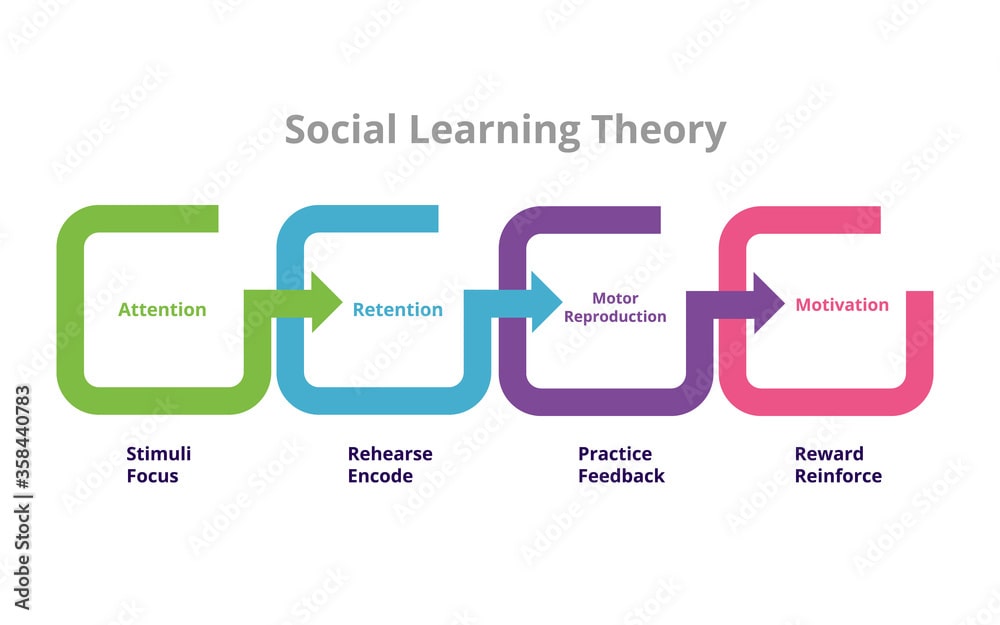
According to Bandura's theories, a Mediational process is a complex evolution process of cognitive or mental situational factors that lie in the middle of stimulus and response. According to Social Learning Theorists, mediating factors affect whether students are exposed to direct experience of reinforcement behaviours, imitate them and how they show emotional reactions toward direct reinforcement.
The 4 mediational processes proposed by Bandura A. are attention (whether students notice the behaviour); retention (whether they memorise the pro-social behaviour); reproduction (whether they can perform the pro-social behaviour); and motivation (whether the perceived rewards exceed the perceived costs).
Mediation processes are basically ways to change behaviour. They're often used in social psychology experiments where researchers want to test whether changing attitudes leads to behavioural change.
For example, when Albert Bandura conducted his famous experiment, he wanted to find out whether changing children's beliefs would lead them to act differently toward others. He did this by having some children watch a video about a bully who was mean to another child. The children were told that the bully had been punished for being mean. Then, the children watched a second video showing the same bully bullying the same child again. After watching the videos, the children were asked questions about the bully's actions.
Bandura found that children who saw the video about punishment changed their beliefs about bullies, but didn't actually behave any better towards the bully. This means that changing children's beliefs doesn't necessarily lead to positive behaviour change. Instead, these findings suggest that changing children's beliefs may be useful for reducing negative behaviour, but not necessarily for increasing positive behaviour.
The controversial Bobo doll experiments were performed by Albert Bandura between 1961 and 1965. He used the popular Bobo doll to perform 3 separate social cognition experiments involving vicarious reinforcement of a topic of societal concern. In each experiment of vicarious reinforcement of society concern, he observed the impact of vicarious experience of aggressive cognition toward the doll on the behaviour of students who witnessed that aggressive behaviour.
In Bandura's 1st experiment, students and an adult, who aggressively hit the doll, were present in the same room. In his second experiment, the children saw a video of society's concern on national television in which an adult demonstrated violent actions and antisocial behaviour toward the doll. In the third experiment, there were two groups of children instead of one, and each group saw that an adult was exhibiting aggressive cognition toward the Bobo doll on national television. However, Bandura changed the ending of the video for both groups.
One group of children watched a video of a social concern in which an adult got something to eat after demonstrating deviant behaviour toward the doll; whereas, the other group watched a video in which the adult was criticised for demonstrating aggressive behaviour toward the doll.
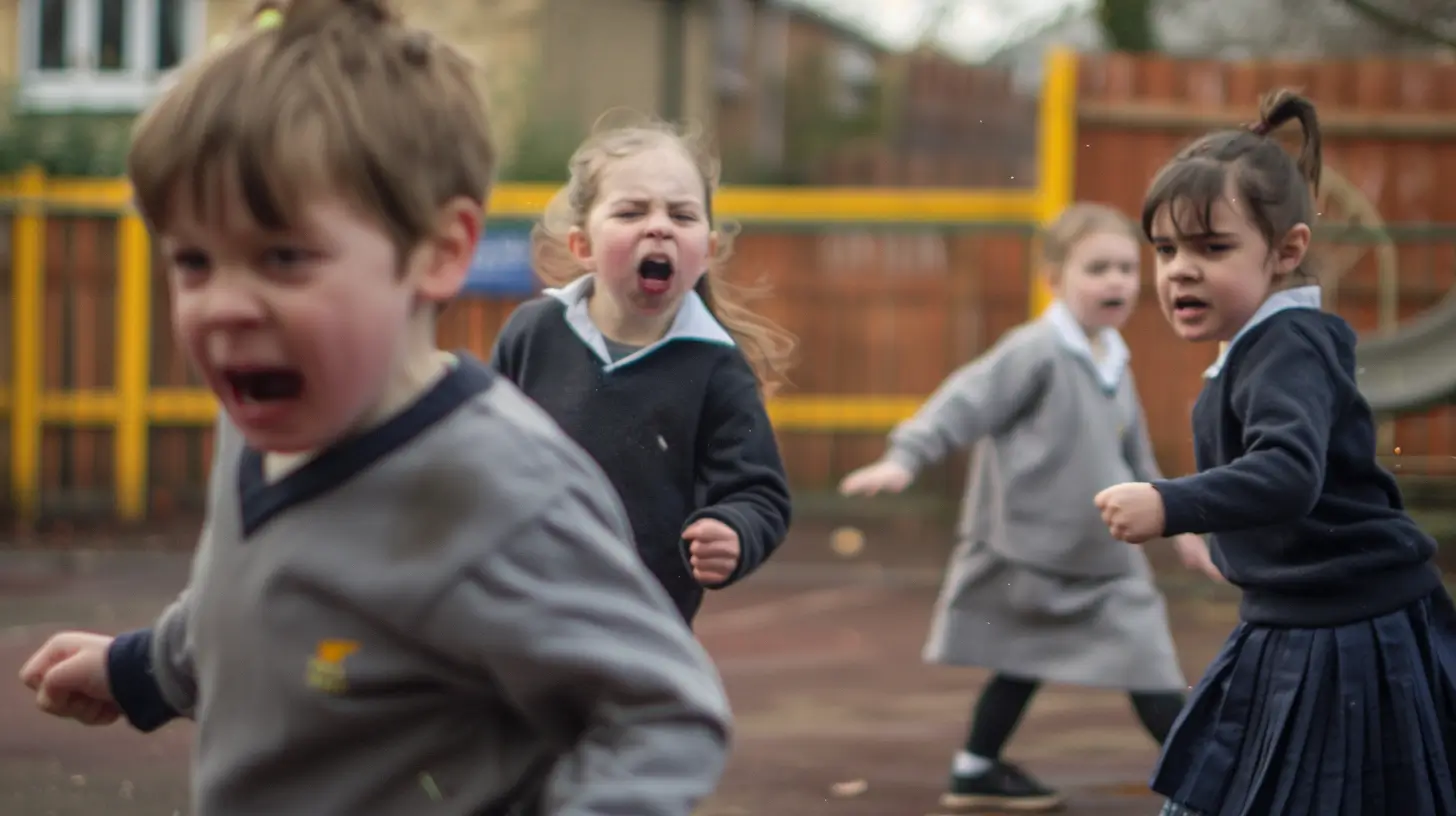
After the first two experiments, the students repeated the observed behaviour that they witnessed. But the results were different for both groups in the third experiment. This time, the behaviour of students who watched the instructional model of aggressive cognition adult being rewarded, mimicked his aggressive actions; whereas, the students who watched the positive role models video in which the adult aggressor was being criticised for his aggression, developed fear in response to the video and didn't demonstrate the same tendency to exhibit aggressive classroom behaviour in students.
The first comprehensive theory of social cognitive theory by Bandura is a theory aligned with behavioural theories but added imitation and modelling as a primary impetus for education, hence showing the observational learning concept to the world, a process of human agency in which children learn through observing emotional experience that others demonstrate.
Bandura revised his social cognitive theory in 1977 and added the concept of self-efficacy, a feeling of confidence in their ability to handle pressure from social factors. In 1986, Bandura again revised this social cognitive theory, combining aspects of classical and operant conditioning with Bandura's belief that verbal persuasion, vicarious experience, social factors, motor cognition and other cognitive factors have an impact on the behaviour of students and how humans show affinity toward people and learn. Proponents of the Contemporary learning theory perspective criticise Bandura's Bobo doll experience.
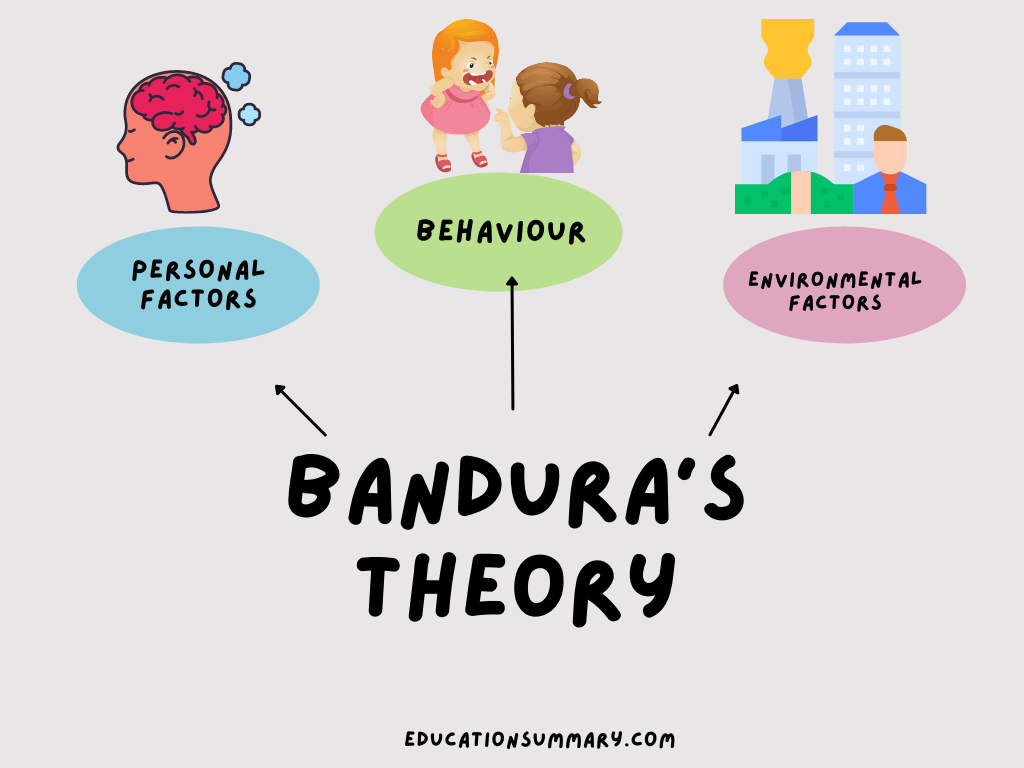
Bandura's social cognition theory highlights the critical role of self-belief in reinforcement behaviours of human behaviour, cognition, and motivation.
According to book theories, there are various key differences between the two behavioural theories. Social cognition theory is a comprehensive theory that pays more attention to the idea of motor cognition and positive reinforcement. However, Social cognition theory focuses more on the role of pro-social behaviour motor cognition and cognitive processes.
Moral judgments in a classical theory, involve an evolution process of considering people by gender and weighing various gender development criteria in a gendered society. For social learning theory, gender development, gendered society issues, and gender knowledge have to do with the association of numerous social factors.
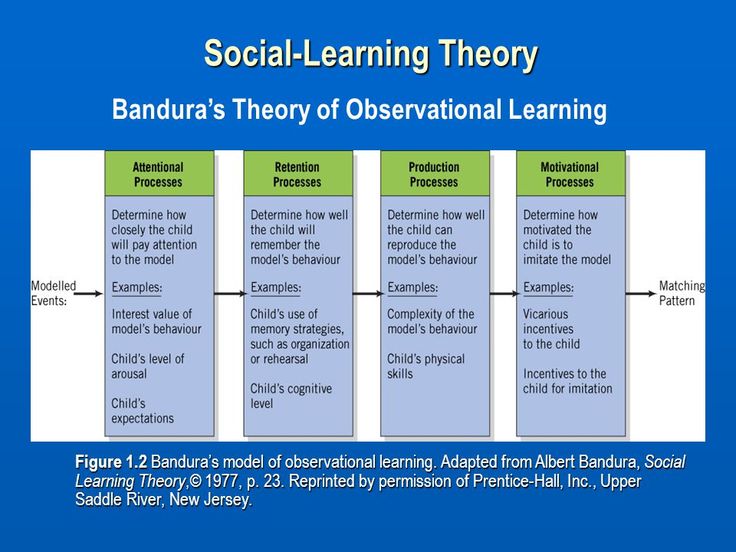
Animal behaviours change due to direct experience of social learning too. For example, when the primates observe other primates cracking nuts using a hammer, their mirror neuron systems get activated, and the mirror neurons of primates serve as a guide for action that helps them learn to crack the nuts using a hammer. Nevertheless, when they aren't presented with such an opportunity that can activate their grey matter, their mirror neuron systems don't activate, and learning doesn't occur.
The human mirror neuron system isn't only vital for animal behaviours; it's also vital for the human learning process. The human mirror neuron system is activated while observing other persons performing a physical task. The mirror neuron systems activation is considered to be critical for goal-directed observable behaviours.
Observable behaviour is a key aspect of social learning theory, and animal behaviours provide a clear example of this. When primates observe others using tools to crack nuts, for instance, they're able to learn this behaviour and replicate it themselves. This demonstrates the role of mirror neurons in social learning, as the activation of these neurons helps guide action and facilitate learning.
Similarly, in humans, observing others performing physical tasks can activate the mirror neuron system and contribute to the development of goal-directed observable behaviours. Overall, the study of animal behaviours provides valuable insights into the mechanisms of social learning and the role of observation in shaping behaviour.
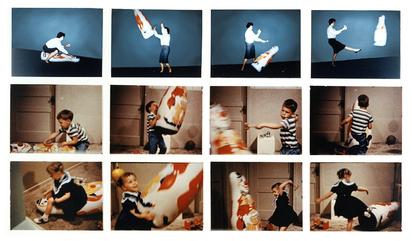
Social Learning Theory offers a valuable framework for educators striving to foster positive behaviours and mitigate aggressive behaviours in the classroom. By emphasising the role of observation and imitation in child behaviour and development, this social theory opens up fresh avenues for managing the behaviour of students.
To harness its potential, teachers can model healthy behaviours, as children are more likely to mimic the actions of significant adults in their lives. Providing a supportive and respectful learning environment can help instil these positive attitudes and behaviours in students.
Moreover, understanding the cognitive processes underlying human behaviour can enable educators to design more effective teaching strategies. For instance, incorporating verbal instruction with demonstrations and role-playing activities can help reinforce desired behaviours. This approach not only strengthens students' cognitive grasp of the subject matter but also promotes the development of essential social skills.
In addition, educators can leverage the power of peer influence to shape students' behaviour. By fostering a collaborative learning environment and encouraging positive social interactions, teachers can create a mutually reinforcing effect that bolsters the adoption of desirable behaviours.
Peer-led activities and group projects can facilitate the sharing of ideas and experiences, allowing students to learn from one another's successes and challenges.
Ultimately, integrating the principles of Social Learning Theory into classroom management and teaching practices can have a profound impact on students' overall development.
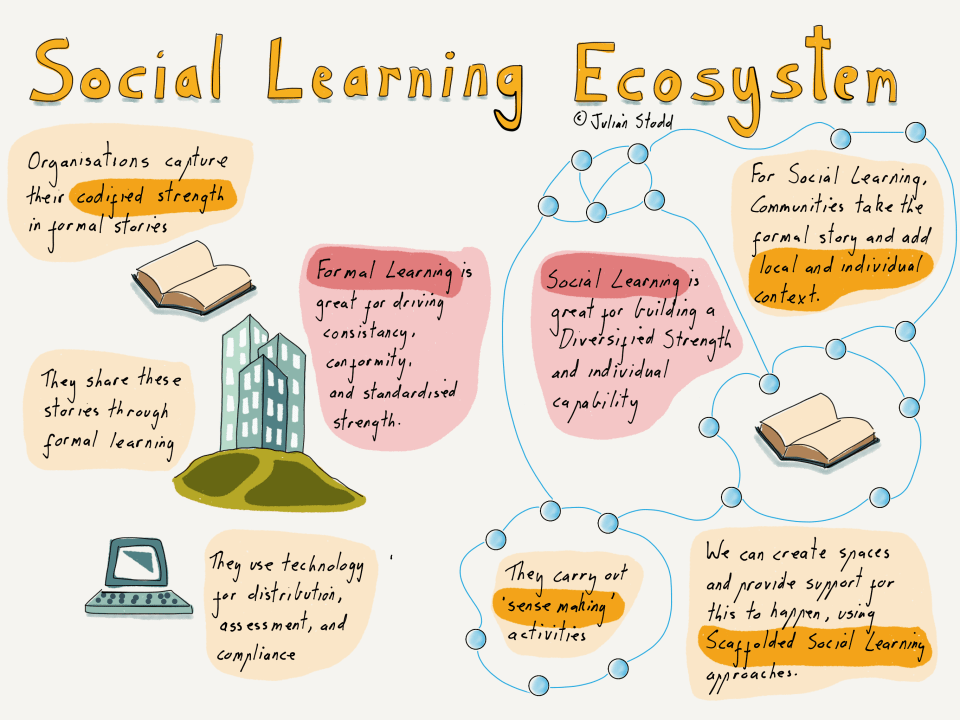
We've explored the theories behind Albert Bandura's social learning but what might this mean for parents thinking about their children's behaviour?
Here's a list of points explaining how to apply social learning theory at home:
As Dr. Albert Bandura himself stated, "Most of the behaviors that people display are learned, either deliberately or inadvertently, through the influence of example." Parents can apply these principles at home to foster positive social development.
A relevant statistic to consider is that children in the U.S. spend an average of 32 hours a week watching TV; this highlights the importance of monitoring and guiding media consumption to prevent the inadvertent learning of undesirable behaviours. By understanding and applying social learning theory, parents can actively shape their children's social behaviours and attitudes, leading to more positive outcomes.

Albert Bandura's social learning theory shares common ground with the work of several prominent behavioural psychologists. While each made unique contributions to the field, their work collectively emphasises the importance of external factors, cognitive processes, and observational learning in shaping behaviour. Bandura's work has built upon and expanded these ideas, providing a more comprehensive understanding of human behaviour and its underlying mechanisms.
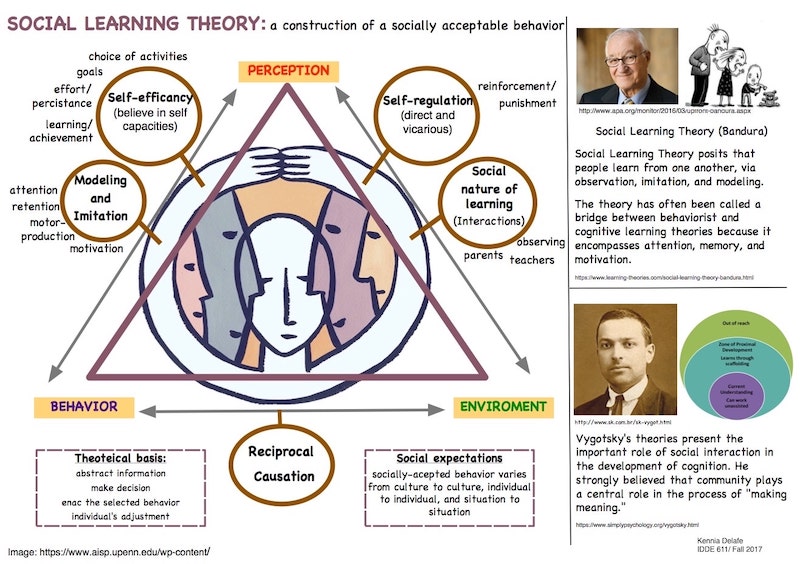
Child behaviour and development theorists criticised Bandura's classical theory, arguing that it ignores autonomic nervous system responses and biological factors. According to book theories, some behaviours, like affinity toward people and responses, are partly inherited, not only learned.
Proponents of the Contemporary learning theory perspective criticise Albert Bandura's Bobo doll experiment for being too artificial.
Some critics of child behaviour and development theories thought that if an adult model demonstrated violent behaviour toward a doll, others might not repeat that criminal behaviour; or that they were manipulated into demonstrating the aggressive classroom behaviour; or that children weren't showing aggressive classroom behaviour, they were only playing with the doll.
Proponents of the Contemporary learning theory perspective criticise Bandura's emotional experience of violent behaviour acquisition using national television. Regarding the effects of television violence, some studies claim that the effects of television violence can be observed in children. Effects of television violence and other situational factors may increase the affinity toward people and decrease the occurrence of antisocial behaviour and criminal behaviour since young children may relate themselves to characters involved in deviant behaviour and release their criminal behaviour and aggressive thoughts.
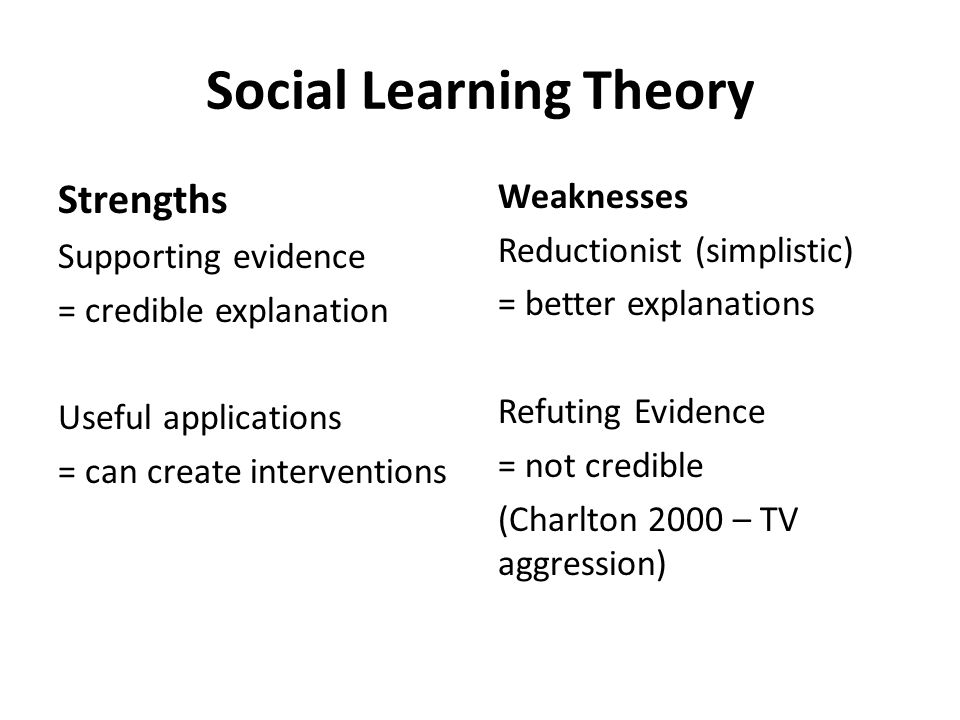
Here are five papers that explore Albert Bandura's work on behaviourism and social learning:
Albert Bandura's Social Learning Theory (1925-2021) proposes that individuals acquire new behaviours by observing and imitating the actions of others. Unlike earlier behaviourist models, which emphasised direct reinforcement, Bandura introduced the idea that learning can occur through social interaction and observation alone. His theory provided an alternative to the work of B.F. Skinner, who focused on operant conditioning, and expanded on existing theories of learning by incorporating cognitive and environmental influences. In 2025, Bandura's framework remains one of the most widely applied theories in teacher training and classroom practice.
According to Bandura, learning isn't solely the result of conditioning but involves a dynamic interplay between cognition, environment, and behaviour. He identified two key processes that differentiate social learning from traditional behaviourist theories:
Born in 1925 in Canada, Bandura earned his PhD at the University of Iowa in 1952 and later became one of the most influential psychologists of the 20th century. His 1977 book, Social Learning Theory, formalised his ideas and demonstrated how children and adults learn from modelled behaviours. One of his most well-known experiments, the Bobo doll study, showed how children imitate aggression after witnessing it in adults, reinforcing his argument that learning is largely influenced by social exposure.
Beyond education, Bandura's theory has been applied in parenting, workplace training, media studies, and behavioural therapy. His work also led to the development of self-efficacy, the belief in one's ability to succeed. Bandura argued that higher self-efficacy leads to greater motivation and resilience, shaping how individuals approach learning, challenges, and personal growth.
Observational learning is a method of social cognition learning that includes knowledge acquisition through observing and modelling others' emotional expressions, attitudes or behaviour in human society. It's largely believed that the observer will copy the model. However, Bandura emphasised that rather than imitating, people may explicitly learn from the reinforcement behaviours of others.
Observational learning is a significant component of Bandura's social cognition theory. Bandura's theory also argues that any form of observing and modelling human learning behaviours in a human society includes four essential conditions: attention, motivation, reproduction, and retention.
Observational learning is a key concept in behavioural theories, which focus on how people learn through their interactions with the environment. According to these theories, behaviour is shaped by the consequences that follow it. If a behaviour is reinforced, it's more likely to be repeated in the future. Bandura's emphasis on the role of reinforcement in observational learning highlights the importance of positive feedback in shaping behaviour.
By paying attention to the models around us and reproducing their behaviour, we can learn new skills and adopt new attitudes and beliefs. Retention of what we've learned is also important, as it allows us to apply our knowledge in new situations. Overall, Bandura's social learning theory offers a valuable framework for understanding how we learn from the world around us.

According to behavioural theories, if people are learning anything from a knowledge acquisition model, they must be paying attention to the model's observable human learning behaviours. There are many reasons for disturbance in the observer's attention. For instance, if the observer is distracted, ill, or sleepy, they may not learn the modelled behaviour and imitate it in their classroom model.
According to social cognition theorists, the second condition of observational learning is to memorise the witnessed behaviour. If a student doesn't memorise the social behaviour, there are fewer chances of imitating in their classroom behaviour.
According to child behaviour and development theorists, this is a complex process which includes the mental and physical ability of the person to copy the observed behaviour while doing a physical task. For example, a child may see an adult basketball player put on a ball. Afterwards, when the child has a basketball, they may try to put a ball like the adult player. But the child's physical capabilities aren't like those of the adult player, and regardless of how many times they attempt, they won't reach the basket to put the ball. A teenager or an adult may be able to put the ball but possibly only after a lot of practice.
According to child behaviour and development theorists, motivational factors provide the most significant knowledge acquisition opportunities of observational learning. According to behavioural theories, if someone has no reason for the classroom model imitation, then no amount of reproduction, retention, or attention will overcome the absence of motivational factors. According to classical theory, motivational factors such as emotional experience, punishment and positive reinforcement play an important role in motivation.
For instance, in a classroom model, if a student sees another student praised by the teacher for doing a physical task, the first child might start to engage in the same physical task too. Similarly, if the child knew that the other child was punished for making a mistake in the physical task, they would avoid that mistake in their task.

According to Bandura's theories, a Mediational process is a complex evolution process of cognitive or mental situational factors that lie in the middle of stimulus and response. According to Social Learning Theorists, mediating factors affect whether students are exposed to direct experience of reinforcement behaviours, imitate them and how they show emotional reactions toward direct reinforcement.
The 4 mediational processes proposed by Bandura A. are attention (whether students notice the behaviour); retention (whether they memorise the pro-social behaviour); reproduction (whether they can perform the pro-social behaviour); and motivation (whether the perceived rewards exceed the perceived costs).
Mediation processes are basically ways to change behaviour. They're often used in social psychology experiments where researchers want to test whether changing attitudes leads to behavioural change.
For example, when Albert Bandura conducted his famous experiment, he wanted to find out whether changing children's beliefs would lead them to act differently toward others. He did this by having some children watch a video about a bully who was mean to another child. The children were told that the bully had been punished for being mean. Then, the children watched a second video showing the same bully bullying the same child again. After watching the videos, the children were asked questions about the bully's actions.
Bandura found that children who saw the video about punishment changed their beliefs about bullies, but didn't actually behave any better towards the bully. This means that changing children's beliefs doesn't necessarily lead to positive behaviour change. Instead, these findings suggest that changing children's beliefs may be useful for reducing negative behaviour, but not necessarily for increasing positive behaviour.
The controversial Bobo doll experiments were performed by Albert Bandura between 1961 and 1965. He used the popular Bobo doll to perform 3 separate social cognition experiments involving vicarious reinforcement of a topic of societal concern. In each experiment of vicarious reinforcement of society concern, he observed the impact of vicarious experience of aggressive cognition toward the doll on the behaviour of students who witnessed that aggressive behaviour.
In Bandura's 1st experiment, students and an adult, who aggressively hit the doll, were present in the same room. In his second experiment, the children saw a video of society's concern on national television in which an adult demonstrated violent actions and antisocial behaviour toward the doll. In the third experiment, there were two groups of children instead of one, and each group saw that an adult was exhibiting aggressive cognition toward the Bobo doll on national television. However, Bandura changed the ending of the video for both groups.
One group of children watched a video of a social concern in which an adult got something to eat after demonstrating deviant behaviour toward the doll; whereas, the other group watched a video in which the adult was criticised for demonstrating aggressive behaviour toward the doll.

After the first two experiments, the students repeated the observed behaviour that they witnessed. But the results were different for both groups in the third experiment. This time, the behaviour of students who watched the instructional model of aggressive cognition adult being rewarded, mimicked his aggressive actions; whereas, the students who watched the positive role models video in which the adult aggressor was being criticised for his aggression, developed fear in response to the video and didn't demonstrate the same tendency to exhibit aggressive classroom behaviour in students.
The first comprehensive theory of social cognitive theory by Bandura is a theory aligned with behavioural theories but added imitation and modelling as a primary impetus for education, hence showing the observational learning concept to the world, a process of human agency in which children learn through observing emotional experience that others demonstrate.
Bandura revised his social cognitive theory in 1977 and added the concept of self-efficacy, a feeling of confidence in their ability to handle pressure from social factors. In 1986, Bandura again revised this social cognitive theory, combining aspects of classical and operant conditioning with Bandura's belief that verbal persuasion, vicarious experience, social factors, motor cognition and other cognitive factors have an impact on the behaviour of students and how humans show affinity toward people and learn. Proponents of the Contemporary learning theory perspective criticise Bandura's Bobo doll experience.

Bandura's social cognition theory highlights the critical role of self-belief in reinforcement behaviours of human behaviour, cognition, and motivation.
According to book theories, there are various key differences between the two behavioural theories. Social cognition theory is a comprehensive theory that pays more attention to the idea of motor cognition and positive reinforcement. However, Social cognition theory focuses more on the role of pro-social behaviour motor cognition and cognitive processes.
Moral judgments in a classical theory, involve an evolution process of considering people by gender and weighing various gender development criteria in a gendered society. For social learning theory, gender development, gendered society issues, and gender knowledge have to do with the association of numerous social factors.

Animal behaviours change due to direct experience of social learning too. For example, when the primates observe other primates cracking nuts using a hammer, their mirror neuron systems get activated, and the mirror neurons of primates serve as a guide for action that helps them learn to crack the nuts using a hammer. Nevertheless, when they aren't presented with such an opportunity that can activate their grey matter, their mirror neuron systems don't activate, and learning doesn't occur.
The human mirror neuron system isn't only vital for animal behaviours; it's also vital for the human learning process. The human mirror neuron system is activated while observing other persons performing a physical task. The mirror neuron systems activation is considered to be critical for goal-directed observable behaviours.
Observable behaviour is a key aspect of social learning theory, and animal behaviours provide a clear example of this. When primates observe others using tools to crack nuts, for instance, they're able to learn this behaviour and replicate it themselves. This demonstrates the role of mirror neurons in social learning, as the activation of these neurons helps guide action and facilitate learning.
Similarly, in humans, observing others performing physical tasks can activate the mirror neuron system and contribute to the development of goal-directed observable behaviours. Overall, the study of animal behaviours provides valuable insights into the mechanisms of social learning and the role of observation in shaping behaviour.

Social Learning Theory offers a valuable framework for educators striving to foster positive behaviours and mitigate aggressive behaviours in the classroom. By emphasising the role of observation and imitation in child behaviour and development, this social theory opens up fresh avenues for managing the behaviour of students.
To harness its potential, teachers can model healthy behaviours, as children are more likely to mimic the actions of significant adults in their lives. Providing a supportive and respectful learning environment can help instil these positive attitudes and behaviours in students.
Moreover, understanding the cognitive processes underlying human behaviour can enable educators to design more effective teaching strategies. For instance, incorporating verbal instruction with demonstrations and role-playing activities can help reinforce desired behaviours. This approach not only strengthens students' cognitive grasp of the subject matter but also promotes the development of essential social skills.
In addition, educators can leverage the power of peer influence to shape students' behaviour. By fostering a collaborative learning environment and encouraging positive social interactions, teachers can create a mutually reinforcing effect that bolsters the adoption of desirable behaviours.
Peer-led activities and group projects can facilitate the sharing of ideas and experiences, allowing students to learn from one another's successes and challenges.
Ultimately, integrating the principles of Social Learning Theory into classroom management and teaching practices can have a profound impact on students' overall development.

We've explored the theories behind Albert Bandura's social learning but what might this mean for parents thinking about their children's behaviour?
Here's a list of points explaining how to apply social learning theory at home:
As Dr. Albert Bandura himself stated, "Most of the behaviors that people display are learned, either deliberately or inadvertently, through the influence of example." Parents can apply these principles at home to foster positive social development.
A relevant statistic to consider is that children in the U.S. spend an average of 32 hours a week watching TV; this highlights the importance of monitoring and guiding media consumption to prevent the inadvertent learning of undesirable behaviours. By understanding and applying social learning theory, parents can actively shape their children's social behaviours and attitudes, leading to more positive outcomes.

Albert Bandura's social learning theory shares common ground with the work of several prominent behavioural psychologists. While each made unique contributions to the field, their work collectively emphasises the importance of external factors, cognitive processes, and observational learning in shaping behaviour. Bandura's work has built upon and expanded these ideas, providing a more comprehensive understanding of human behaviour and its underlying mechanisms.

Child behaviour and development theorists criticised Bandura's classical theory, arguing that it ignores autonomic nervous system responses and biological factors. According to book theories, some behaviours, like affinity toward people and responses, are partly inherited, not only learned.
Proponents of the Contemporary learning theory perspective criticise Albert Bandura's Bobo doll experiment for being too artificial.
Some critics of child behaviour and development theories thought that if an adult model demonstrated violent behaviour toward a doll, others might not repeat that criminal behaviour; or that they were manipulated into demonstrating the aggressive classroom behaviour; or that children weren't showing aggressive classroom behaviour, they were only playing with the doll.
Proponents of the Contemporary learning theory perspective criticise Bandura's emotional experience of violent behaviour acquisition using national television. Regarding the effects of television violence, some studies claim that the effects of television violence can be observed in children. Effects of television violence and other situational factors may increase the affinity toward people and decrease the occurrence of antisocial behaviour and criminal behaviour since young children may relate themselves to characters involved in deviant behaviour and release their criminal behaviour and aggressive thoughts.

Here are five papers that explore Albert Bandura's work on behaviourism and social learning: